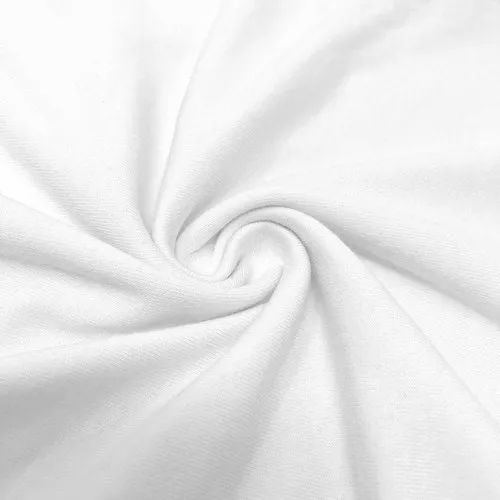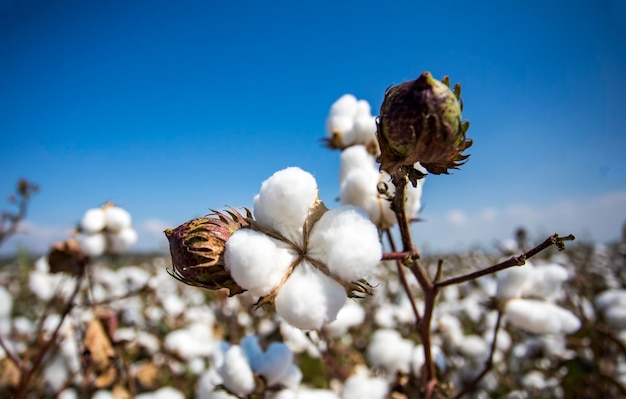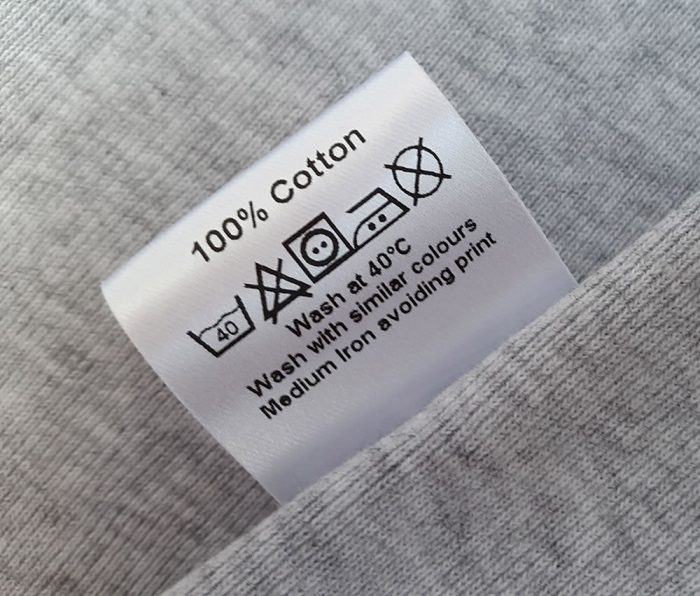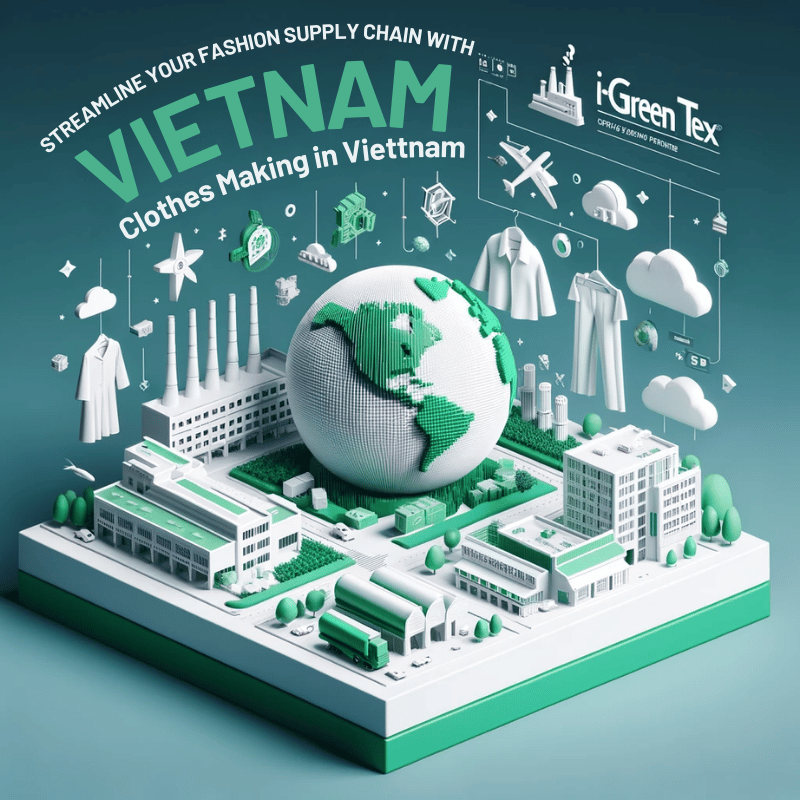Cotton fabric derived from the fibers of cotton plants, has several unique properties that make it a popular choice for textiles and other products:
- Fabric Composition: Cotton fabric is made from organic fibers from the seeds of the cotton plant.
- Softness: Cotton fibers are naturally soft and comfortable to the touch, making them ideal for clothing, bedding, and other household items.
- Absorbency: Cotton is highly absorbent, it can hold a large amount of water. This makes cotton fabrics breathable and comfortable to wear.
- Strength: Cotton is known for its high tensile strength and durability, which means it can withstand repeated washings and wear.
- Heat Retention Abilities: Cotton has medium heat retention abilities.
- Stretchability: Cotton has medium stretchability.
- Prone to Pilling/Bubbling: Cotton is relatively prone to pilling, rips, and tears.
These properties make the cotton fabric very versatile. It is spun into soft knitting yarns, woven into absorbent terry cloth towels, and used to create durable denim for blue jeans, and soft and breathable underwear. It is absorbent, soft to the touch, lightweight, durable, and breathable. Cotton fabric washes and irons easily.
The History of Cotton Fabric
Cotton fabric has a rich and complex history that spans thousands of years and numerous civilizations. Here’s a brief overview:
- Ancient Civilizations: The earliest evidence of cotton fabric dates back to around 5000 BC, with cotton textiles found in ancient civilizations in India, Egypt, and Peru. In these early societies, cotton was prized for its softness, breathability, and versatility.
- Middle Ages: Cotton was introduced to Europe in the Middle Ages by Greek and Roman merchants. Cotton fabric production flourished in Europe from the 13th century.
- Modern History: Cotton played an important role in the history of India, the British Empire, and the United States, and continues to be an important crop and commodity. The cotton industry played a significant role in the development of the American economy, with the production of cotton being a major source of income for slave owners in the southern United States before the Civil War.
- Today: Today, cotton remains an important crop worldwide, with China and India being the largest producers. Cotton fabric is used in a wide range of applications, from clothing and bedding to industrial uses.
The history of cotton fabric is indeed fascinating, reflecting the evolution of human civilization and technological advancement over the millennia.
How is Cotton Fabric made?
Cotton fabric is made through a multi-step process that transforms raw cotton into the fabric we use in various products. Here’s a step-by-step guide on how cotton fabric is made:
- Cultivation of Cotton: Cotton is grown in warm climates around the world. The cotton plant produces fluffy fibers, which are harvested once the seeds are mature.
- Harvesting: The cotton plants are harvested, and the cotton bolls (the protective casing that surrounds cotton seeds) are collected.
- Processing the Raw Cotton: The harvested cotton is then processed to remove the seeds and impurities from the cotton fibers.
- Spinning the Cotton Fibers: The cleaned cotton fibers are spun into yarn or thread. This process involves twisting the fibers together to form a long, continuous strand.
- Weaving or Knitting the Cotton Yarn: The cotton yarn is then woven or knitted into fabric. The weaving process involves interlacing two sets of yarn at right angles, while knitting involves interlocking loops of yarn.
- Dyeing and Printing the Cotton Fabric: The woven or knitted cotton fabric can then be dyed or printed with various colors and patterns.
- Finishing and Quality Control: The final step involves finishing processes to improve the look, performance, or “hand” (feel) of the fabric. This can include treatments to make the fabric wrinkle-resistant, shrinkage control, or adding a softer finish. The fabric then undergoes quality control checks.
It’s important to note that the exact process can vary depending on the type of cotton fabric being produced and the specific practices of the manufacturer.
The Benefits and Uses of Cotton
Cotton, a natural and organic textile, is known for its versatility and numerous benefits. Here are some of the key benefits and uses of cotton:
Benefits of Cotton
- Comfort: Cotton is non-allergenic, comforting, soothing, and has high absorbent properties, making it a non-irritant and one of the most comfortable fabrics to wear.
- Durability: Despite its softness, cotton is extremely durable and resistant to abrasion.
- Versatility: Cotton fabric can be made into a wide variety of fabrics, suitable for a great variety of wearing apparel, home furnishings, and industrial uses.
- Breathability: Cotton is very breathable, which makes it perfect for hot weather or for people with sensitive skin.
- Sustainability: Cotton farming can be environmentally friendly, using water efficiently and reducing pesticide usage.
Uses of Cotton
- Clothing: Cotton is used in a wide range of clothing including shirts, dresses, socks, and underwear.
- Home Goods: Cotton is commonly used in sheets, towels, upholstery, and other home goods.
- Industrial Uses: Cotton is also used in industrial applications like making ropes, currency, paper, cooking oil, animal feed, packaging, and biofuels.
- Medical Uses: Cotton has wide medical uses due to its high absorbency and non-irritant nature.
- Cotton is indeed a versatile and beneficial material, used in a wide range of applications from fashion to home decor and even industrial applications.
Types of Cotton Fabric
There are numerous types of cotton fabrics, each with its own unique characteristics and uses. Here are some of the most common types:
- Quilting Cotton: Also referred to as craft cottons, patchwork cotton, or printed cotton. They are plain weave cottons that are light to medium weight cotton.
- Brushed Cotton: Sometimes referred to as flannel or flannelette. It is a medium-weight cotton fabric that has surface fibers that are brushed on one side of the material which gives it a very soft and warm look and feel.
- Pima Cotton: Considered a higher-end type of cotton fabric, pima cotton boasts longer fibers than regular cotton. Smooth fabric that is very soft to the touch is created with pima cotton.
- Egyptian Cotton: Known as the highest quality cotton fabric, Egyptian cotton is used to make a number of products, including higher thread count bed sheets.
- Denim: A sturdy cotton warp-faced textile in which the weft passes under two or more warp threads.
- Flannel: A soft woven fabric, of various fineness. Flannel was originally made from carded wool or worsted yarn, but is now often made from either wool, cotton, or synthetic fiber.
- Muslin: A lightweight cotton cloth in a plain weave. It is made in a wide range of weights from delicate sheers to coarse sheeting.
- Poplin: A strong fabric in a plain weave of any fiber or blend, with crosswise ribs that typically gives a corded surface.
- Velvet: A type of woven tufted fabric in which the cut threads are evenly distributed, with a short dense pile, giving it a distinctive soft feel.
Each type of cotton has its own characteristics that make it best suited for different uses. From clothing and bedding to industrial uses, there is a type of cotton with just the right properties for each item.
Cotton Care
Caring for cotton fabric properly can help maintain its quality and longevity. Here are some general guidelines for cotton care:
- Washing: Cotton can typically be machine washed. Use warm water for white cotton and cold water for colored cotton to prevent color fading.
- Detergent: Use a mild detergent. Avoid using bleach as it can weaken the cotton fibers over time.
- Drying: Cotton can be tumble dried on a low setting. Remove from the dryer while still slightly damp to prevent wrinkling.
- Ironing: If needed, iron cotton fabric while it’s still damp on a high setting.
- Storage: Store cotton in a dry, cool place and avoid direct sunlight to prevent colors from fading.
Remember, always check the care label on your cotton item as the care instructions may vary based on the specific blend of the fabric.
IGREEN TEX VIETNAM CO LTD
Address: No. 83 , A4 Street, Ward 12, Tan Binh Dist, HCMC
Tax code: 0315844409
Email: info@igreentex.com
WhatsApp/Viber/Zalo: +84938.045.900









